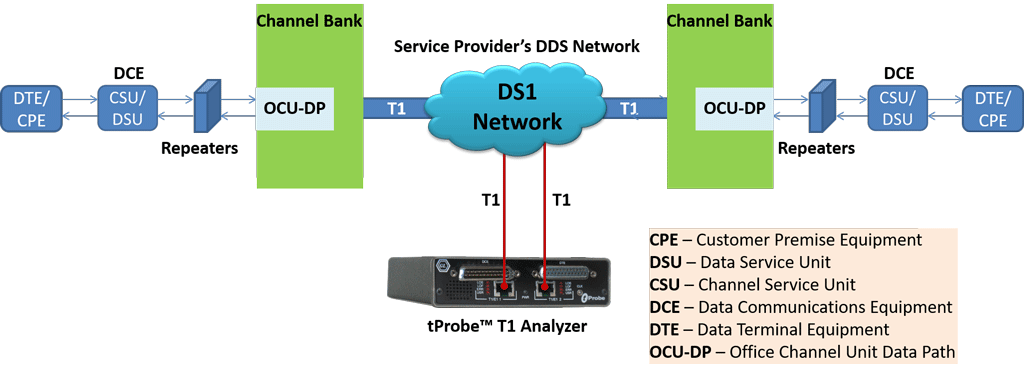GL Announces DDS Protocol Analysis Software
Gaithersburg, Maryland, USA – January 17, 2018 - GL Communications Inc., announced today its latest Protocol Analyzer for Digital Data Service (DDS).

Speaking to the press, Mr. Vijay Kulkarni, the CEO of the company said, "In late 1970's to late 1980's ATT offered a pure private line digital data service called Dataphone Digital Service, or DDS. Supported rates of 2.4, 4.8, 9.6, and 19.2 were standard with higher rates such as 56 kbps, and n x 56 kbps also possible but rarely. These circuits although legacy, still are quite common TODAY - because they work! Circuit design is as shown above. Specialized channel cards called OCU-DP (Office Channel Unit Data Port) are connected to standard CSU/DSUs with datacomm interfaces as shown in the above diagram.
Both synchronous and asynchronous data is formatted and fit cleanly into a 64 kbps timeslot (by repeating the data bits or bytes). The bit repetition had the added advantage of providing error correction and thus better performance. The channel data is then inserted into timeslots of a standard T1. In this manner many data circuits can be packed into a private line T1."
He added, "GL supports non-intrusive monitoring and analysis of DDS frames using T1 Analyzer hardware. The captured data can be decoded and analyzed by GL's DDS Protocol Analyzer."
Mr. Kulkarni further explained, "Non-intrusive TAPs are used to passively duplicate the signal between two end points on a network link without disturbing the actual network activity. GL's T1 Analyzer hardware can be used with RJ48 Y Bridge - splits one RJ48 into two complete- to non-intrusively tap and capture the DDS frames on a T1 line."
He added, "The DDS data is formatted into frames separated by one or more bytes. The data channel may utilize multiple, all or a fractional timeslot of the T1 line. Also, there may be multiple data channels within the T1 line. The captured data analyzed using GL's DDS Protocol Analyzer."
Important Features
- Displays Summary, Detail, and Hex-dump views
- Streams can be captured on the selected time slots (contiguous or non-contiguous), sub-channels, or full bandwidth.
- Frames can be captured in either 64 kbps, 56 kbps, n x 64 kbps, or n x 56 kbps data channels (hyper-channels)
- Exports Summary View information to a comma delimited file for subsequent import into a database or spreadsheet
- Capability to export detailed decode information to an ASCII file
- Status bar displaying information regarding running percent utilization, Number of frames captured and Frame errors etc
- Multiple trace files can be loaded simultaneously with different GUI instances for offline analysis
 Back to Press Releases Index Page
Back to Press Releases Index Page